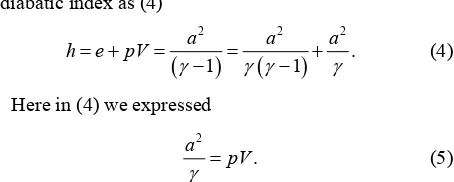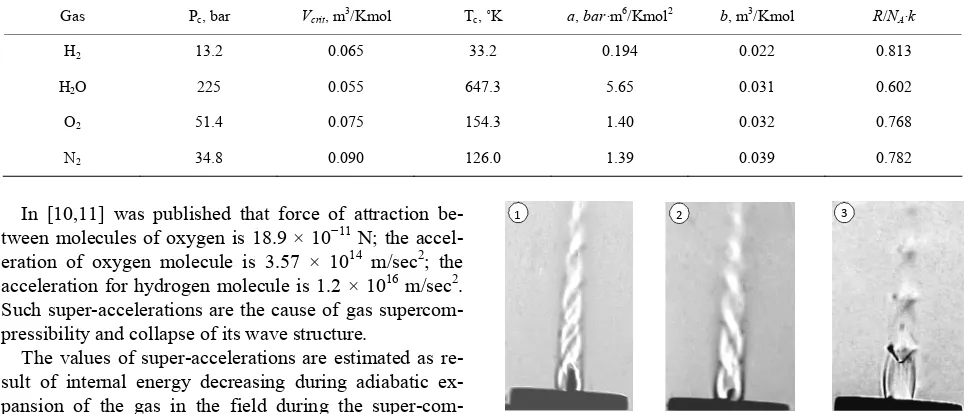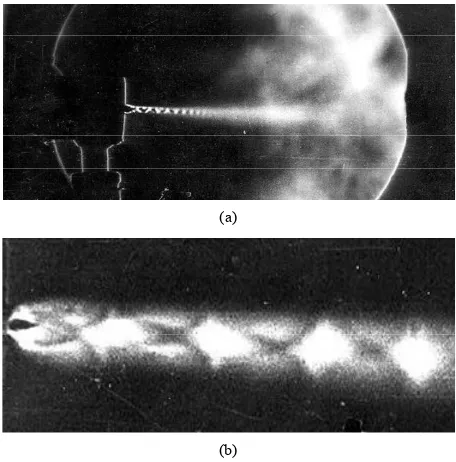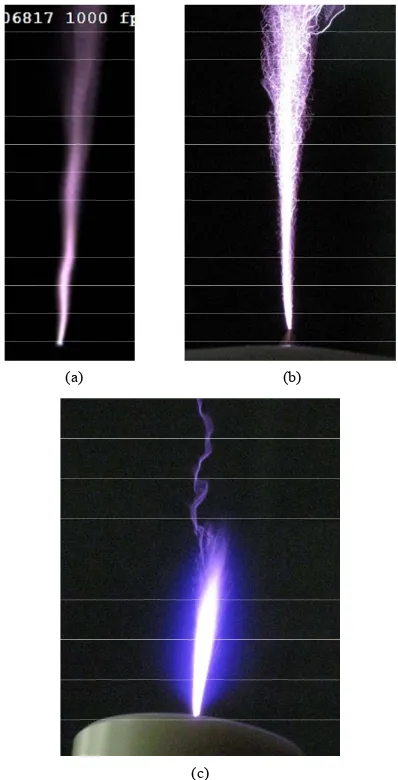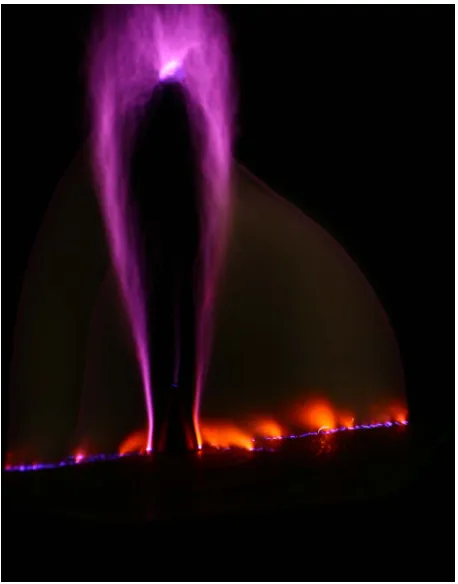Super-Compressibility Phenomenon
Kholmurad Khasanov
Gas and Wave Dynamics Department, Lomonosov Moscow State University, Moscow, Russia
Email: kholkh@bk.ru
Received November 24, 2012; revised December 26, 2012; accepted January 6, 2013
ABSTRACT
Super-compressibility and density jump of high-energy field in gases and in condensed matters are established as source of high density energy field in the nozzle with central cone. The nozzle is resonator and dynamic emitter of the fields in spiraled subsonic and supersonic jets. The values of super-accelerations are estimated as result of internal energy changing and decreasing during adiabatic expansion of the gas. Super accelerations in this field provide high energy radiation in continuous media. These phenomena can serve as basis for creation of new sources of energy.
Keywords: Supercompressibility; Superdensity Jump; Super High Density Field; Wave Spiral; Nozzle with a Central
Cone
1. Introduction
Super high density energy field is detected in gas flowing from the nozzle with a central cone [1,2]. This nozzle is the resonator and dynamic emitter as in [3]. The emission of electromagnetic radiation of high energy during su- percompressibility and superdensity jump in supersonic spiraled jet [4] is observed. The phenomenon of super- compressibility and superdensity jump in under-expan- ded submerged jet on output of the dynamic emitter re- sults to the arising of super high density energy field in continuous media. In our experiments vapor jets form channels of stationary boundary layers with progressing strong compression of jet transverse and longitudinal cross-sections. Here we discuss the result of adiabatic expansion of the gas in dynamic emitter that results to the jet internal energy decreasing and its kinetic energy increasing. The measurements show that supercompres- sibility of supersonic jet has nonlinear character.
Super-compressibility, as result of super accelerations of the molecules of the jet, is accompanied by high en- ergy radiation. It is close to multibubble compressibility at sonoluminescence phenomenon in liquid [5]. Sonolu- minescence is the emission of short bursts of light from imploding bubbles in a liquid when excited by sound. But the phenomena discussed in our paper have signifi- cant differences from sonoluminescence and were found in the gas flows. Presented phenomena have nonlinear character. The evaluation of linear instability of the waves as sources of sound in a supersonic turbulent jet was discussed in [6]. They show that the noise generation process is not well modeled quantitatively by the linear
theory. For the jet considered in their study, nonlinear effects are not only present, but they dominate the noise, as in our investigations. Their theoretical approach may be useful to explain our experiments.
Many open questions remain in the study of structured jets. Similar phenomena are observed during the jets emanating from young stellar objects. Of particular in- terest for astrophysics are issues related to the internal energy and internal structure of the jet [7]. Recent obser- vations using Hubble Space Telescope and other high- resolution platforms indicate that jets may content sig- nificant sub-radial structure (δx < rjet) with high Mach
numbers (M ~ 20), which implies that jets may be inher- ently heterogeneous. Thus experimental studies to date have shown that stable supersonic jets can propagate over long distances without energetic losses and without disruption of the structure. This material is accelerated in the gravitational field of the star, reaching supersonic velocities and producing a shockwave which emits in ultra-violet and X-rays regions [8].
Astrophysical jets are ubiquitous throughout the uni- verse. They can be observed to emerge from proto-stellar objects, stellar X-ray binaries and super-massive black holes located at the center of active galaxies, and they are believed to originate from a central object that is sur- rounded by a magnetized accretion disc [8].
Usually they show that these jets propagating, main- taining their collimation over long distances is measured in units of the jet initial radius. The studied jets, as in our investigations, are quasi-isentropic, they are both lighter and heavier than the ambient and meet the two main scaling parameter requirements for proto-stellar jets: the
ejection Mach number and the (ambient density)/(jet density) ratio [9].
In our investigations the ratio (ambient density)/(jet density) is equal at least 2 - 5 (see Section 3.1).
The lifetime of the molecules in pre-chamber of the dynamic emitter defines the super minimal intermolecu- lar distance. The interaction leads to its high accelera- tions in the vicinity of the outlet of the annular nozzle. Heavy free ions, as (OH−) and (
2
N), originating in the channels acquire relativistic accelerations. In [10,11] was published: the force of attraction between molecules of oxygen 18.9 × 10−11 N; the acceleration of oxygen mole-
cule 3.57 × 1014 m/sec2; the acceleration for hydrogen
molecule 1.2 × 1016 m/sec2. Such super-accelerations are
the cause of gas supercompressibility and collapse of its wave structure.
By the other way instead the jets with high Mach numbers (M ~ 20) in present work we provide propaga- tion without disruption of structured jets over long dis- tances for low (M ~ 1 - 3) Mach numbers and also for subsonic jets. Their propagation is accompanied with super high density energy field and cool effectively due to internal gas energy decrease and radiation losses.
2. Theoretical Part
2.1. Supercompressibility of Continuous Media in the Adiabatic Approximation
Super-compressibility and superdensity jump, as result of super-accelerations in spiraled supersonic jet, is accom- panied with super high density energy field. The nozzle is the resonator and provides stationary wave structures in continuous media.
These structures form the stable boundary layers and emit super high density energy field, as summarized in [10,11]. The results of measurement of the characteristics of these fields are presented in this work.
The expansion process in the pre-chamber is not re- versible and (P, T) in different locations are different. But the behavior of gas within each sufficiently small volume is quite satisfactorily described by the adiabatic equation. One considers the expansion in the pre-cham- ber of the dynamic emitter as reversible adiabatic process. Enthalpy and internal energy of the gas are related by Equation (1).
Hereinafter the Equations (1)-(5) are given for a unit mass:
.
h e pV
(1)
It is known [12] that internal energy e as in (2) and enthalpy h as in (3) are related with sound velocity a as
2 , 1 a e
(2)
2 1 a h
. (3)
In (2)-(3) γ is adiabatic index. Enthalpy we expressed from (1) and (3).
Author proposes to present it via sound velocity and adiabatic index as (4)
2 2 2
.
1 1
a a a
h e pV
(4)
Here in (4) we expressed
2 a
pV
. (5)
We investigate separately each summand in (1) and show that kinetic energy increasing in the conic cross section of pre-chamber occurs due to internal energy de- creasing.
Phenomena of supercompressibility and superdensity jump arise as result of internal energy decreasing during adiabatic expansion of the gas. It leads to increasing of the force of intermolecular interacting and to a high ac- celeration of the molecules. The super-compressibility arises as a result of intensive interacting in the gas and its structures. Such molecular interaction generates the su- percompressibility as in the vicinity of outlet of the noz- zle and in the jets propagating over long distances with- out energetic losses and without disruption of the struc- ture.
The force of intermolecular interacting bringing accel- erated molecules on small distances. The molecules ac- celerated up to 1014 - 1016 m/sec2 [10,11] that provides
electromagnetic field of super high density energy.
2.2. Boundary Conditions in the Resonator
In the first experiments we provided the field of super high density energy in vicinity of subsonic and super- sonic under-expanded submerged flows, on output of dynamic emitter [3] as nozzle with a conic central body. The detailed design of the nozzle is shown in Figure 1.
The length of the generated wave structure was equal to 10 diameters of outlet of the nozzle approximately. The phenomenon of supercompressibility and superdensity jump in under-expanded submerged jet on output of the dynamic emitter results to the arising of super high den- sity energy field in continuous media. The nozzle was made from bronze and other metals. In case of water va- por jets the nozzle was made from composite material or meta-material as textolite.
Design of the nozzle in Figure 1 allows a longitudinal
[image:2.595.312.539.160.251.2]α β b a 1 2 d1 d L
d 3 2
[image:3.595.58.288.85.224.2]II. I.
Figure 1. Design of the dynamic emitter with central cone. Here: 1 is central cone with diameter d3 = 25 mm and angle α = 30˚; 2 is the truncated cone of the pre-chamber with diameter d2 = 60 mm and the angle β = 60˚; d1 is a diameter
of outlet of the nozzle; the annular gap a = 0.3 - 0.6 mm; the external part o the internal cone b = 3 - 6 mm; a length of pre-chamber L = 150 mm. The dimensions are given in [1]. and energetic researches of other configurations of un- der-expanded submerged jets during their flowing from this nozzle at different operating conditions and dimen- sional parameters.
The optimal conditions for emergence of regular in- teracting subsonic and supersonic jets are given in [1]. We altered gas pressure and geometry of pre-chamber. Compressor provided filtered gas pressure in operating range 1.5 - 31 atm. When the gas is flowing out into the atmosphere it acquires a configuration of strong pro- nounced compressed flow of spiral-twisted radiating wave structures. The structures consist of certain dimensions cells [4].
In the motionless volume from Figure 1, limited with
sections I-I and II-II, in the absence of heat exchange with the environment, the total enthalpy is constant as (10) 2 2 gen W h
h const.
(10) In (10) W1 and W2 are flow velocities in sections I-I
and II-II comparatively and hgen is general enthalpy. For sections I-I and II-II, we have the relation (11)
2 2
2 2
.1 .1
1 2
1 1 1 2
2 1 2
зв зв зв
a a W 2 2 .2 .2 2 2 . 1 зв a a W
(11) Here also Equations (10) and (11) are given for a unit mass.We have shown that in section II-II sum of decreasing of the pressure forces (14531.0 J) and of the internal en- ergy (36326.5 J) is ∆ = 36326.5 + 14531.0 = 50857.5 J and it is spent on the increasing of kinetic energy equal to 49,987 J and on the work against the friction forces. So, (36326.5/49,987) × 100 = 73% of the increasing in the
kinetic energy in section II-II is due to the decreasing of internal energy of the gas.
The increasing of the kinetic energy is significant and is accompanied with a decreasing of the internal energy of gas and decreasing of the temperature. Sound velocity is reached at the critical section.
Previously G. N. Abramovich, S. A. Khristianovich, L. D. Landau, G. Black, V. G. Dulov, W. G. Pirumov, G. S. Roslyakov etc. considered the heat content (enthalpy) as a quantity which does divide on internal energy and PV. The calculations provide that contribution of the internal energy into kinetic energy of the jet is more than three times greater than energy of PV.
So, phenomena of supercompressibility, superdensity jump and the field of super high density energy arise due to decreasing of the internal energy of the continuous media.
2.3. Estimations of Super Acceleration
To estimate the acceleration of the molecules we use the model of hard elastic spheres and adjustment coefficients a and b of Van der Waals forces. Potential for interaction is given as (12):
, 2 ;
, 2 ,
S S m r r r r r r
(12)
Here rS is the radius of the cross section of collisions of gas molecules. The best approximation is achieved at m = 6. Parameter β is expressed through Avogadro’s number NA, and Van der Waals coefficients a and b as (13):
3 9 4π A
ab N 3 16π
crit A S
V N r
(13)
All parameters for some gases are given in Table 1.
The critical volume is given as (14) where radius of the cross section is given from (15) respectively:
(14)
3 2 2π crit S A V r N
(15)
The force of interaction that defines the super accel- eration is given as (16):
1 d . d m m F r r
(16)
The acceleration one calculates from (16) for conven- ient mass of molecule. Heavy free ions, as (OH−) and (N2), originating in the channels of the jets acquire rela- tivistic accelerations.
Table 1. Critical data and constant Van der Waals parameters.
Gas Pc, bar Vcrit, m3/Kmol Tc, ˚K a, bar·m6/Kmol2 b, m3/Kmol R/NA·k
H2 13.2 0.065 33.2 0.194 0.022 0.813
H2O 225 0.055 647.3 5.65 0.031 0.602
O2 51.4 0.075 154.3 1.40 0.032 0.768
N2 34.8 0.090 126.0 1.39 0.039 0.782
In [10,11] was published that force of attraction be- tween molecules of oxygen is 18.9 × 10−11 N; the accel-
eration of oxygen molecule is 3.57 × 1014 m/sec2; the
acceleration for hydrogen molecule is 1.2 × 1016 m/sec2.
Such super-accelerations are the cause of gas supercom- pressibility and collapse of its wave structure.
3
1 2
The values of super-accelerations are estimated as re- sult of internal energy decreasing during adiabatic ex- pansion of the gas in the field during the super-com-
pressibility of the continuous media. Figure 2. The shadowgraphs of formation the under-ex- panded submerged spiraled air jets. Here are right: (1) and left-twisted (2) rigid boundary layers as “horn of the uni- corn”. The direction of twist of air jet is changing versus different positions of the central cone outside the outlet of nozzle. A pressure in pre-chamber is 6 atm and tempera- ture of surrounding air is 291˚K. On the right (3) the cone was on 4 mm inside the outlet of nozzle.
3. Experimental Part
In our experiments air and vapor-air jets form the chan- nels of stationary boundary layers with progressing strong compression of jet in transverse and longitudinal cross-sections. For example, if the diameter of the nozzle cut was equal to 3 mm, then the supercompressibility of jets was observed along the distance of 30 mm approxi- mately. This unexpected phenomenon of a formation of a spiral twisted configuration may have various practical applications and it can lead to new tasks of develop- ment of gas-dynamical theory for his theoretical under- standing in future. The jet with such configuration pre- sents a new type of vortical flows as presented in Figure 2.
Here (in Figures 3 and 4) diameter of outlet of the
nozzle was 3.6 mm, the observed length of the jet was 25 mm, air pressure in pre-chamber was 2.2 - 2.7 atm, the critical cross-section on the nozzle output was 2 mm2. Jet
density distributions along longitudinal and transverse coordinate of the jet are measured. The cross-section of the jet becomes blurred in gravity field during horizontal flowing of jet.
The ratio (ambient density)/(jet density) in our inves- tigations is equal 2 - 5.
3.1. Density Distribution in the Jet
3.2. Flame Attraction to the Air Spiraled Jet
Results of visualizing of stationary boundary layers dur- ing their compressing along the coordinates of the jet show that jet has other density than ambient density. Au- thor with Zakharova T. V. and Berezencev M. U. has held the measurement of the density distribution of the supersonic spiraled jet along its longitudinal and trans- verse coordinates. Method of supervision classification in the decision of aerodynamic problems [13] was provided.
Phenomenon of the candle flame attraction to the spi- raled jet one observes. During gas flowing from the nozzle with a central cone the flame starts attracting and compressing with the jet (see Figure 5).
One can see from Figure 5 that in spiraled supersonic
jet flowing from the nozzle with central cone the elec- tromagnetic field with super high energy density is gen- erated.
The horizontal outflow of the jet in gravitational field was investigated. Distribution of density of the gas in [Kg/m3] is presented in
Figure 3. It is scanned from the
flooded area (left) to the nozzle (right). 3.3. Electromagnetic Characteristics of Spiral Vapor-Air Jet Distribution of density of the gas in [Kg/m3] is pre-
sented in Figure 4 for transverse cross-section of the jet.
It is scanned from bottom to top of the cross-section of horizontal outflow of the jet in gravitational field.
Figure 3. Density p = p(L), in [Kg/m3], scanned from the flooded area (left) to the nozzle (right). Longitudinal coordinate L, in [mm*0.1], is on abscise axis of the draft.
[image:5.595.309.537.357.588.2]Figure 4. Density p = p(D), in [Kg/m3], scanned from bottom (on left) up to top (on right) in vicinity the nozzle outlet. Trans- verse coordinate D, in [mm*0.1], is on abscise axis of the draft.
Figure 5. Candle flame attracting and compressing to the air spiral jet.
jet in the atmosphere the characteristics of plasma with more density of energy were measured. The emission of electromagnetic radiation from the X-ray to infrared spectrum has been found from initially neutral vapor [14]. The results below are obtained for jets as in Figure 6.
High frequency voltage in jet in range 3 - 4 kV for pre-chamber pressure 2 - 4 atm and 50 - 80 kV at 10 - 12 atm are measured at 393˚K for both cases. Frequency of electromagnetic field in operating range 1.4 MHz - 1 GHz for pre-chamber pressures in range 4 - 8 atm are detected.
(a)
(b)
Figure 6. The shadowgraphs of the jets structure are pre- sented for two cases of vapor-air jet flowing from the nozzle with a central cone. On the left pre-chamber pressure was provided 1.5 atm, when is the beginning of the formation of regular structure in subsonic jet. On the right pre-chamber pressure was provided 31 atm. Here is forming the struc- ture of regular interacting shock waves in under-expanded supersonic jet.
Direct current voltage in the jet in range 80 - 100 kV at pre-chamber pressure 10 - 12 atm, 393˚K and electric field strength 102 V/cm around of the jet at distance r = 5 -
10 m are measured. Amplitude of electric current for HF
[image:5.595.58.288.358.566.2]field is in operating range 1 μA - 1 mA during short-cir- cuit of the jet on the ground; at pressures 6 - 12 atm. Electrons density in different layers of the jet is estimated as 109 cm−3 at distance r = 1 m in vapor-air jet. Electrons
density near the central cone is 1015 cm−3 at distance r =
10 mm - 10 cm from the cone top. The accuracy of mea- surements was 0.5 % at the multiple repetitions of the experiments.
The regular axial symmetric vortex structures in water vapor and air jets are obtained. These structures consist of the cells of certain dimensions. The type of structure and dimensions of its cells depends on the position of the central cone and pre-chamber pressure (see Figure 2).
The nozzle in Figure 6 provides boundary conditions
for generation of this field. It is resonator and dynamic emitter of field with super high density energy in sub- sonic (Figure 6(a)) and supersonic (Figure 6(b)) jets.
3.4. Air Jet Visualization with High Frequency Field
To provide the study of the radiation characteristics dur- ing supercompressibility of supersonic jets, high fre- quency field was used as the mean for the jet visualiza- tion and its spectra registration. This type of discharge will occur when the strength or potential gradient of the electrical field around the conductor is high enough to form a conductive region, but not high enough to cause electrical breakdown or arcing to nearby objects. In our case the conductor is central cone in pre-chamber (1 in
Figure 1).
The overview spectra of emission of radiation of the jets were obtained in region = 280 - 800 nm, = 0.293 nm with AVASPEC 2048. Detailed spectra of emission of radiation were obtained in optical region = 383 - 527 nm, = 0.083 nm. The visualization was provided with electric discharge from HF generator, where frequency f = 268 kHz, output inductivity was L = 21 mHn, generator power was 700 - 800 W, current am- plitude IA = 0.5 A, voltage amplitude UA = 5 Kv.
High density energy field is detected in gas flowing from the nozzle with a central cone (Figure 7). The an-
nual nozzle with central cone is dynamic emitter in which initially neutral gas is supplied. The super-compressibil- ity and super-density jump arise as a result of high den- sity field interacting within the continuous media.
In the third experiment with the same nozzle was sup- plied water vapor. The pressure of water vapor in pre- chamber was 2 - 12 atm, the temperature of vapor was 393˚K in the pre-chamber and it decreased to 333˚K on output of the dynamic emitter. The environment room temperature was 293˚K.
Beginning from 4 atm pressure, the high frequency field was detected from 1.4 MHz up to 1 GHz in spiral-
twisted supersonic jets. The field arises in region both in and around of the jet.
In the figures one can see that the radiation in sub- merged jet has a regular character due to regularly inter- acting shock waves [15]. Therewith in Figure 8 one can
see glowing space around the jet. In case of supplying water vapor supersonic jets start glowing in violet region and other in region of other short electromagnetic waves. Glowing in violet region is visually observed with the naked eye in dark conditions on approaching a conduct- ing mass by 1 - 2 m.
The increased brightness of discrete parts of the jet appears as a result of high electrons density. Water vapor provides plasma with more specific density of electrons energy that provides energy cumulation in small volumes
(a) (b)
(c)
[image:6.595.323.522.275.665.2]Figure 8. The antenna disposed on 10 cm over the top of cone. 1.4 - 1.6 MHz was supplied on the antenna. The metal plate and cone were grounded in the single-electrode scheme. Here is interaction of terahertz frequency fields of outer space with the jet. Against vector of gravitation.
and high energy radiation.
One can see that measured characteristics are enough for generation of radiation of high energy as result of super-compressibility of internal energy decreasing and kinetic energy increasing of supersonic spiral-twisted jets in the vapor-air structured flows.
4. Conclusions
The phenomena of super-compressibility and density jump of high-energy field are established in gases and in condensed matters.
These phenomena occur on small distances due to internal forces of an electrical nature are result of changing (decreasing) of the internal energy and su- per accelerations.
The super accelerations provide high energy radiation in continuous media.
The phenomena we establish can serve as a basis for the creation of new sources of high-density energy.
5. Acknowledgements
Author deeply appreciates to B. V. Melkoumian from A. M. Prokhorov General Physics Institute of RAS for
comments, discussions and help in paper preparation. Author gratefully acknowledges for the long-term sup- port and consulting to M. V. Lomonosov Moscow State University rector, academician V. A. Sadovnichiy.
REFERENCES
[1] Kh. Khasanov, “Double Spiraled Supersonic Jet,” Fluid Dynamics, Vol. 46, No. 3, 2011, pp. 433-436.
[2] Kh. Khasanov, “Bi-Spiral Switched Supersonic Jet Flow Escaping from a Circular Nozzle: Interaction with Metal and Polymer Screens, Infrared Radiation Phenomenon,” International Conference: Fluxes and Structures in Fluids. Physics of Geospheres, Moscow, 24-27 June 2009, pp. 206-210.
[3] Kh. Khasanov and S. V. Petukhov, “Dynamic Emitter,” PF Patent No. 2058196, 1996.
[4] Kh. Khasanov, “Visualization of Super-Compressibility in Supersonic Spiral-Twisted Jets,” Physics Letters A, Vol. 376, No. 5, 2012, pp. 748-753.
[5] W. B. McNamara, Y. T. Didenko and K. S. Suslick, “Sono- luminescence Temperatures during Multi-Bubble Cavita- tion,” Nature, Vol. 376, No. 5, 1999, pp. 772-775. doi:10.1016/j.physleta.2011.12.018
[6] K. Mohseni, T. Colonius and J. B. Freund, “An Evalua-tion of Linear Instability Waves as Sources of Sound in a Supersonic Turbulent Jet,” Physical Fluids, Vol. 14, No. 10, 2002, pp. 3593-3600. doi:10.1063/1.1501545
[7] P. Hartigan, A. Frank, J. M. Foster, B. H. Wilde, M. Douglas, P. A. Rosen, R. F. Coker, B. E. Blue and J. F. Hansen, “Fluid Dynamics of Stellar Jets in Real Time: Third Epoch Hubble Space Telescope Images of HH 1, HH 34, and HH 47,” Astrophysical Journal, Vol. 736, No. 1, 2011, p. 29. doi:10.1088/0004-637X/736/1/29
[8] D. W. Savin, et al., “The Impact of Recent Advances in Laboratory Astrophysics on Our Understanding of the Cosmos,” Reports on Progress in Physics, Vol. 75, No. 3, 2012, pp. 1-36. doi:10.1088/0034-4885/75/3/036901 [9] D. Tordella, M. Belan, S. Massaglia, S. De Ponte, A. Mig-
none, E. Bodenschatz and A. Ferrari, “Astrophysical Jets: Insights into Long-Term Hydrodynamics,” New Journal of Physics, Vol. 13, No. 4, 2011, 13 p.
doi:10.1088/1367-2630/13/4/043011
[10] Kh. Khasanov, “Radiation of Bi-Spiral Switched Super- sonic Jet Flow Escaping from an Annular Nozzle. Fluxes and Structures in Fluids. Physics of Geospheres—2009 (Abstracts),” Moscow, 24-27 June 2009.
[11] Kh. Khasanov, “Phenomena Taking Place at the Atomic Level under Certain Perturbation,” Abstracts of 56th In- ternational Symposium on Molecular Spectroscopy, Ohio State University, Columbus, 2001, p. 125
[12] G. G. Chernyi, “Gas Dynamics,” Nauka, Moscow, 1988. [13] T. V. Zakharova and M. U. Berezencev, “About a Method
of Supervision Classification in the Decision of Aerody- namic Problems,” Transactions of the XXIV International Seminar on Stability Problems for Stochastic Models, Riga: TTI, 2004, pp. 353-356.
[14] Kh. Khasanov, “Emission of High Energy during Super- Compressibility of Supersonic Jets,” Open Journal of Fluid Dynamics (OJFD), Vol. 2, 2012, pp. 172-179. [15] Kh. Khasanov, “Visualization of Bi-Spiral Twisted Su-
